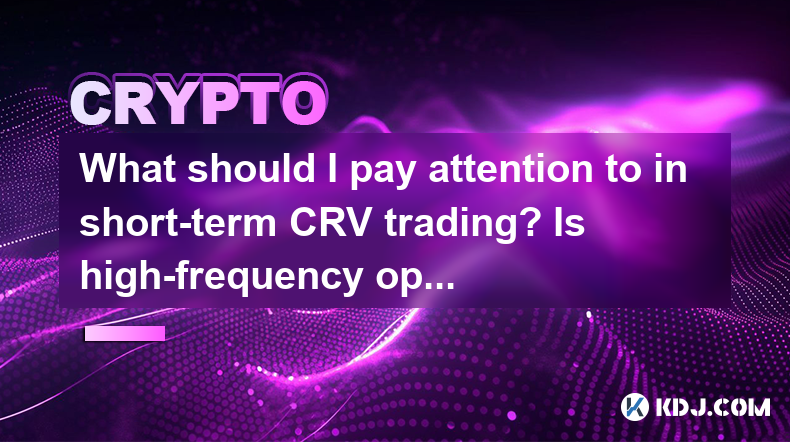-
 Bitcoin
Bitcoin $96,041.5422
1.02% -
 Ethereum
Ethereum $1,793.1176
0.21% -
 Tether USDt
Tether USDt $1.0003
0.02% -
 XRP
XRP $2.1096
-1.55% -
 BNB
BNB $599.2261
-0.26% -
 Solana
Solana $145.5095
0.31% -
 USDC
USDC $1.0000
0.00% -
 Dogecoin
Dogecoin $0.1697
0.30% -
 TRON
TRON $0.2476
0.85% -
 Cardano
Cardano $0.6579
-0.93% -
 Sui
Sui $3.2456
-0.19% -
 Chainlink
Chainlink $13.5281
-0.70% -
 UNUS SED LEO
UNUS SED LEO $8.6901
-0.26% -
 Avalanche
Avalanche $19.1741
-3.69% -
 Stellar
Stellar $0.2575
-0.45% -
 Toncoin
Toncoin $2.9882
-1.56% -
 Shiba Inu
Shiba Inu $0.0...01259
-0.04% -
 Hedera
Hedera $0.1737
-0.91% -
 Bitcoin Cash
Bitcoin Cash $355.7951
-1.59% -
 Hyperliquid
Hyperliquid $20.8897
0.92% -
 Litecoin
Litecoin $87.4089
3.50% -
 Polkadot
Polkadot $3.8964
-1.30% -
 Dai
Dai $1.0004
0.03% -
 Monero
Monero $280.7546
-1.46% -
 Bitget Token
Bitget Token $4.2150
-1.13% -
 Ethena USDe
Ethena USDe $1.0006
0.02% -
 Pi
Pi $0.5793
-0.01% -
 Pepe
Pepe $0.0...08165
3.14% -
 Bittensor
Bittensor $357.1209
-2.41% -
 OKB
OKB $50.6258
-0.15%
What should I pay attention to in short-term CRV trading? Is high-frequency operation risky?
Short-term CRV trading involves monitoring market sentiment, using technical analysis, and managing risks, while high-frequency trading adds volatility and technical challenges.
May 07, 2025 at 11:15 am

Short-term trading of Curve DAO Token (CRV) can be an exciting yet challenging endeavor within the cryptocurrency market. To navigate this space effectively, it's essential to understand the key factors that influence CRV's price and the potential risks associated with high-frequency operations. This article will delve into what you should pay attention to when engaging in short-term CRV trading and discuss the risks of high-frequency operations.
Understanding CRV and Its Market Dynamics
Curve DAO Token (CRV) is the native token of the Curve Finance platform, a decentralized exchange liquidity pool on Ethereum designed for extremely efficient stablecoin trading. The price of CRV can be influenced by various factors including market sentiment, liquidity changes, protocol upgrades, and broader market trends.
When engaging in short-term trading of CRV, it's crucial to monitor these factors closely. Market sentiment can shift rapidly, affecting CRV's price. Keeping an eye on news related to Curve Finance, such as new partnerships or upgrades, can provide insights into potential price movements. Additionally, liquidity within Curve's pools can impact CRV's volatility. A sudden increase or decrease in liquidity can lead to significant price swings, which short-term traders need to be prepared for.
Technical Analysis for Short-Term CRV Trading
Technical analysis is a vital tool for short-term traders looking to capitalize on CRV's price movements. By analyzing charts and using various indicators, traders can identify potential entry and exit points. Key indicators to consider include:
- Moving Averages: These can help identify trends. For instance, if the short-term moving average crosses above the long-term moving average, it might signal a bullish trend.
- Relative Strength Index (RSI): This can indicate whether CRV is overbought or oversold, helping traders anticipate potential reversals.
- Volume: High trading volume can confirm the strength of a price move, making it a crucial factor in short-term trading decisions.
Using these tools, traders can develop strategies that align with their risk tolerance and trading goals. For example, a trader might use a combination of moving averages and RSI to identify short-term trading opportunities.
Risk Management in Short-Term CRV Trading
Risk management is paramount in short-term trading, especially with a volatile asset like CRV. Implementing effective risk management strategies can help protect your capital and ensure long-term success. Here are some key practices:
- Set Stop-Loss Orders: These can automatically sell your CRV if the price drops to a certain level, limiting potential losses.
- Position Sizing: Only risk a small percentage of your trading capital on any single trade to avoid significant losses.
- Diversification: While focusing on CRV, consider diversifying your trading portfolio to mitigate risk.
By adhering to these risk management principles, traders can navigate the volatility of CRV more confidently.
High-Frequency Trading and Its Risks
High-frequency trading (HFT) involves executing a large number of orders at very fast speeds, often using algorithms. While HFT can be profitable, it comes with significant risks, particularly in the context of CRV trading. Here are some of the key risks:
- Market Volatility: CRV's price can be highly volatile, making it challenging to predict short-term movements accurately. High-frequency traders need to be prepared for sudden price swings that could result in substantial losses.
- Technical Failures: HFT relies heavily on technology. Any technical glitch or connectivity issue can lead to missed opportunities or unintended trades.
- Regulatory Risks: The regulatory environment for cryptocurrencies is evolving, and changes could impact the viability of HFT strategies.
Given these risks, it's essential for traders to thoroughly understand the mechanics of HFT and the specific dynamics of CRV before engaging in such operations.
Tools and Platforms for Short-Term CRV Trading
To effectively engage in short-term CRV trading, you'll need access to reliable tools and platforms. Here are some options to consider:
- Trading Platforms: Platforms like Binance, Coinbase Pro, and Kraken offer robust trading interfaces with advanced charting tools and order types suitable for short-term trading.
- Charting Software: Tools like TradingView provide comprehensive charting capabilities and allow you to customize indicators and drawing tools to suit your trading strategy.
- Automated Trading Bots: For those interested in HFT, platforms like 3Commas or Cryptohopper can automate trading strategies, though they require careful setup and monitoring.
When selecting tools and platforms, consider factors such as fees, user interface, and the availability of specific features that align with your trading approach.
Executing a Short-Term CRV Trade
To illustrate the process of executing a short-term CRV trade, let's walk through a hypothetical scenario:
- Monitor Market Conditions: Use real-time data and news feeds to stay informed about factors that could impact CRV's price.
- Analyze Charts: Open your charting software and apply technical indicators to identify potential entry and exit points.
- Set Up Your Trade: On your chosen trading platform, set up a buy order for CRV at your identified entry point. Consider using a limit order to ensure you get the price you want.
- Implement Risk Management: Set a stop-loss order to limit potential losses and determine your position size based on your risk tolerance.
- Monitor and Adjust: Keep an eye on the trade and be ready to adjust your stop-loss or take-profit levels as the market evolves.
- Close the Trade: Once your target price is reached or your stop-loss is triggered, the trade will close automatically. Review the trade to learn from the outcome and refine your strategy.
By following these steps, you can execute short-term CRV trades with greater precision and control.
Frequently Asked Questions
Q: How can I stay updated on CRV's market sentiment?
A: To stay updated on CRV's market sentiment, follow reputable cryptocurrency news sources, join relevant social media groups and forums, and use tools like Google Alerts to receive notifications about Curve Finance and CRV-related news.
Q: What are some common mistakes to avoid in short-term CRV trading?
A: Common mistakes include overtrading, ignoring risk management, chasing losses, and not adapting to changing market conditions. Always stick to your trading plan and continuously educate yourself to avoid these pitfalls.
Q: Can I use leverage in short-term CRV trading, and what are the risks?
A: Yes, many platforms offer leverage for CRV trading, which can amplify both gains and losses. The risks include magnified losses if the market moves against your position, potential margin calls, and increased volatility exposure. Use leverage cautiously and with a solid understanding of its implications.
Q: How important is it to backtest my trading strategy before using it for CRV trading?
A: Backtesting is crucial as it allows you to evaluate the effectiveness of your trading strategy using historical data. It helps identify potential flaws and refine your approach before risking real capital. Always backtest your strategy thoroughly to increase your chances of success in live trading.
Disclaimer:info@kdj.com
The information provided is not trading advice. kdj.com does not assume any responsibility for any investments made based on the information provided in this article. Cryptocurrencies are highly volatile and it is highly recommended that you invest with caution after thorough research!
If you believe that the content used on this website infringes your copyright, please contact us immediately (info@kdj.com) and we will delete it promptly.
- Privacy-Powered Cold Wallet Takes the Lead With 4900% ROI, While PEPE Eyes 100% and VeChain Targets a Breakout
- 2025-05-08 03:45:13
- Trump's cryptocurrency $TRUMP has been called a "conflict of interest," a "constitutional crisis," and blatant "corruption."
- 2025-05-08 03:45:13
- Interoperability, Momentum, and Security Shape the Next Phase of Crypto Development
- 2025-05-08 03:40:13
- Ethereum [ETH] Now Hovers Around $1,844.18 Despite a Modest 2.75% Daily Uptick
- 2025-05-08 03:40:13
- BlockDAG Presale Hits $227.5M After Podcast Debut
- 2025-05-08 03:35:12
- Ruvi (RUV) Is the Next Binance Coin (BNB), Offering Even Greater Earning Potential
- 2025-05-08 03:35:12
Related knowledge

Is Ethereum Layer2 fee low? How to use it cheaper?
May 08,2025 at 03:56am
The question of whether Ethereum Layer 2 solutions offer lower fees and how to use them more economically is a topic of great interest within the cryptocurrency community. Ethereum's Layer 2 solutions have been developed to address the high transaction fees and scalability issues associated with the main Ethereum network. In this article, we will delve ...

How to calculate Ethereum network fee? How to reduce transaction costs?
May 08,2025 at 02:15am
Understanding and managing Ethereum network fees is crucial for anyone involved in transactions on the Ethereum blockchain. The network fee, also known as gas fee, is the amount of Ether (ETH) required to successfully conduct a transaction or execute a smart contract on the Ethereum network. Calculating these fees and finding ways to reduce them can sig...

What is Ethereum Gas Fee? How to optimize Gas Fee to save costs?
May 08,2025 at 03:43am
Ethereum gas fees are a crucial aspect of interacting with the Ethereum blockchain. Understanding and optimizing these fees can significantly impact the cost-effectiveness of transactions and smart contract interactions. In this article, we will delve into what Ethereum gas fees are, how they are calculated, and provide detailed strategies for optimizin...

How to perform MOVE cross-chain transfer? What to do if the gas fee is too high?
May 07,2025 at 08:03pm
Introduction to MOVE Cross-Chain TransferCross-chain transfers have become an essential part of the cryptocurrency ecosystem, allowing users to move assets between different blockchain networks. One of the popular protocols for achieving this is the MOVE cross-chain transfer. This article will guide you through the process of performing a MOVE cross-cha...

Does DYDX support cross-chain? Is the transfer speed fast?
May 07,2025 at 05:56pm
Introduction to DYDXDYDX is a leading decentralized exchange (DEX) that primarily operates on the Ethereum blockchain. It is known for its advanced trading features, including perpetual contracts and margin trading. A common question among users is whether DYDX supports cross-chain functionality and how fast the transfer speeds are. In this article, we ...

How to close a DYDX contract? How to set an automatic stop loss?
May 08,2025 at 12:29am
Closing a DYDX contract and setting an automatic stop loss are crucial skills for managing your positions on the dYdX decentralized exchange. Whether you're looking to mitigate risk or simply exit a trade, understanding these processes can enhance your trading strategy. In this article, we will explore the detailed steps for closing a DYDX contract and ...

Is Ethereum Layer2 fee low? How to use it cheaper?
May 08,2025 at 03:56am
The question of whether Ethereum Layer 2 solutions offer lower fees and how to use them more economically is a topic of great interest within the cryptocurrency community. Ethereum's Layer 2 solutions have been developed to address the high transaction fees and scalability issues associated with the main Ethereum network. In this article, we will delve ...

How to calculate Ethereum network fee? How to reduce transaction costs?
May 08,2025 at 02:15am
Understanding and managing Ethereum network fees is crucial for anyone involved in transactions on the Ethereum blockchain. The network fee, also known as gas fee, is the amount of Ether (ETH) required to successfully conduct a transaction or execute a smart contract on the Ethereum network. Calculating these fees and finding ways to reduce them can sig...

What is Ethereum Gas Fee? How to optimize Gas Fee to save costs?
May 08,2025 at 03:43am
Ethereum gas fees are a crucial aspect of interacting with the Ethereum blockchain. Understanding and optimizing these fees can significantly impact the cost-effectiveness of transactions and smart contract interactions. In this article, we will delve into what Ethereum gas fees are, how they are calculated, and provide detailed strategies for optimizin...

How to perform MOVE cross-chain transfer? What to do if the gas fee is too high?
May 07,2025 at 08:03pm
Introduction to MOVE Cross-Chain TransferCross-chain transfers have become an essential part of the cryptocurrency ecosystem, allowing users to move assets between different blockchain networks. One of the popular protocols for achieving this is the MOVE cross-chain transfer. This article will guide you through the process of performing a MOVE cross-cha...

Does DYDX support cross-chain? Is the transfer speed fast?
May 07,2025 at 05:56pm
Introduction to DYDXDYDX is a leading decentralized exchange (DEX) that primarily operates on the Ethereum blockchain. It is known for its advanced trading features, including perpetual contracts and margin trading. A common question among users is whether DYDX supports cross-chain functionality and how fast the transfer speeds are. In this article, we ...

How to close a DYDX contract? How to set an automatic stop loss?
May 08,2025 at 12:29am
Closing a DYDX contract and setting an automatic stop loss are crucial skills for managing your positions on the dYdX decentralized exchange. Whether you're looking to mitigate risk or simply exit a trade, understanding these processes can enhance your trading strategy. In this article, we will explore the detailed steps for closing a DYDX contract and ...
See all articles





















































































